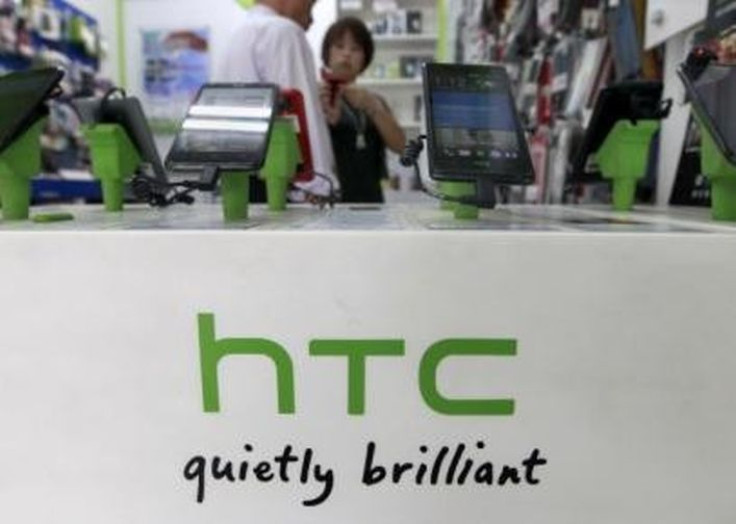HTC Desire Eye vs. Motorola DROID Turbo - Specifications, Features And Price Showdown

The Motorola DROID Turbo has recently been released in October. The HTC Desire Eye, on the other hand, will be released in November. Readers who are interested in the Motorola DROID Turbo or the HTC Desire Eye should check out this comparison.
Display, Design And Size
The DROID Turbo comes with a 5.2-inch Super AMOLED display and 1,440 x 2,560 pixels Quad HD resolution. This combination comes to a pixel density of 565 ppi. The HTC Desire Eye, meanwhile, shares the same screen size as the DROID handset, however, it features a relatively inferior screen resolution of 1,080 x 1,920 pixels and 424 ppi pixel density.
When it comes to design, the Desire Eye smartphone flaunts a high-quality plastic chassis. The company has clearly worked on perfecting the camera, hence the modest Duo Camera mounted on the flagship HTC One M8 is eliminated. Additionally, the handset features a physical camera shutter button. On the whole, the Desire Eye smartphone has everything a flagship device should house, says ZDNet.
On the Turbo handset, Motorola's ultimate aim is to rectify the battery problems persisting in the current-generation smartphones. Hence, the DROID device comes housed with a humongous 3,900 mAh battery unit, which can offer up to 2 days of battery charge under moderate usage. So, the battery configuration is 1,000 mAh+ more than the iPhone 6 Plus and nearly 800 mAh more than the Samsung Galaxy Note 4. Moving on to the design, the DROID device looks identical to the Moto X with the same plastic chassis, reports Mashable.
Speaking of size, the thickness and weight of the HTC's new handset are 0.33-inch and 154 g respectively, whereas the Turbo is 0.31-inch thick and weighs 169 g. While the Desire Eye is comparatively lighter, the Turbo is thinner.
Hardware, Software And Memory
The DROID Turbo is powered by the latest quad-core (Qualcomm Snapdragon 805) Krait 450 processor, clocked at 2.7 GHz and Adreno 420 for graphics. The Desire Eye, on the other hand, is powered by a relatively inferior quad-core (Qualcomm Snapdragon 801) Krait 400 processor, clocked at 2.3 GHz and Adreno 330 GPU. Additionally, the Motorola device is backed by a killer 3 GB of RAM, whereas the Desire Eye settles for a modest 2 GB RAM.
On the software side, the DROID Turbo runs on Android 4.4.2 KitKat OS but there is a planned upgrade to v5.0 Lollipop. Meanwhile, the Desire Eye runs on Android v4.4.2 KitKat OS with HTC Sense 6 UI. While the Motorola smartphone comes equipped with 32 GB and 64 GB of in-built storage options, the Desire Eye settles for 16 GB. While the DROID device does not support microSD card, the HTC handset supports up to 128 GB.
Camera And Battery
The Turbo sports an impressive 21 MP rear-facing camera with dual-LED flash and 4K video support, in addition to a 2 MP secondary unit. Whereas the Desire Eye features a 13 MP primary unit with dual-LED flash and a killer 13 MP front-facing unit. There is also a dual-LED flash at the front, making it a selfie-lovers' dream device.
The distinguishable camera features of the HTC Desire Eye include Split Capture and Crop-Me-In options. The Split Capture divides the captured picture into 50/50 by combining the pictures taken via the front and rear snapper units. The Crop-Me-In feature, on the other hand, can be used to append any captured picture on to any other image, similar to the Photo-shopping feature. In addition, there are two built-in camera-centric apps dubbed the HTC Eye Experience and HTC Zoe, GSM Arena reports. When it comes to battery, the Turbo device is backed by a powerhouse Li-Po 3,900 mAh unit, whereas the Desire Eye houses an inferior Li-Ion 2400 mAh unit.
DROID Turbo | HTC Desire Eye | |
Talk Time | 48 Hours | 20 Hours |
Stand-by Time | 675 Hours | 538 Hours |
Additional Features
1. The HTC Desire Eye comes with BoomSound speakers. Besides, it features a water- and dust-resistant exterior (IPX7 certified), while the DROID device doesn't. However, the Motorola device does come with water-resistive coating. Thereby, the smartphone can survive accidental water splashes. But leaving the handset underwater for longer period of time would impair it permanently.
2. HTC has gone microphone-crazy with the Desire Eye. A total of 3 microphones are part of the device. The microphones are located alongside the selfie camera, one at the back and another one at the bottom end of the handset, GSM Arena says.
3. The Turbo features an aggressive design synonymous to other DROID handsets, complete with Kevlar-like finish. The handset comes with two rear panel choices namely metallic and ballistic nylon design. While the former is a metal-coated fibre-glass, the latter is made of military grade material, Android Authority reports. Also, the Turbo comes in Metallic Red and Metallic Black hues, while the Desire Eye offers Blue, Red and White colour choices.
4. While the DROID device offers wireless charging facility, the Desire Eye doesn't. Plus, both the phones employ nano-SIM. Furthermore, both the phones support NFC and 4G LTE. But then, the Turbo also supports Infrared port.
5. The camera-centric HTC Zoe app offers collaborative video editing. Moreover, the app can be paired with "Re," the latest, stand-alone action camera from HTC. Importantly, the Android-based smartphones from different OEMs can benefit from this app, since the company has not made it exclusive to its devices. Plus, Zoe's Apple iOS app will be released by the end of 2014.
6. HTC Eye Experience camera app is also not exclusive to the Desire handset. The company will roll out the app to HTC One Mini 2, One Remix, HTC One (M8), One Max, One (E8), One (M7), One Mini and Desire models like 612 and 816 very soon.
Price
The Verizon-exclusive Motorola DROID Turbo's 32 GB variant comes for US$199, whereas the 64 GB version can be availed for US$249 under a contract. It is worth noting that, Verizon is offering a free one-time screen replacement for the purchased device, Android Authority reports. Furthermore, the outright price of the 32 GB model is US$599 (i.e. AU$684). The AT&T-exclusive HTC Desire Eye (16 GB), on the other hand, is priced at 529 euros, which translates to US$661 and AU$755, says NWE.
Also Read
1. Apple iPad Air 2 vs. Surface Pro 3 - Specifications, Features And Price Showdown - [Read]
2. Apple iPad Pro To Compete With Microsoft Surface Pro 3 With 12.2-Inch Display, Front-Facing Speakers, iSight Camera - [Read]
3. OnePlus One vs. Oppo N3 - Specifications, Features And Price Showdown - [Read]






